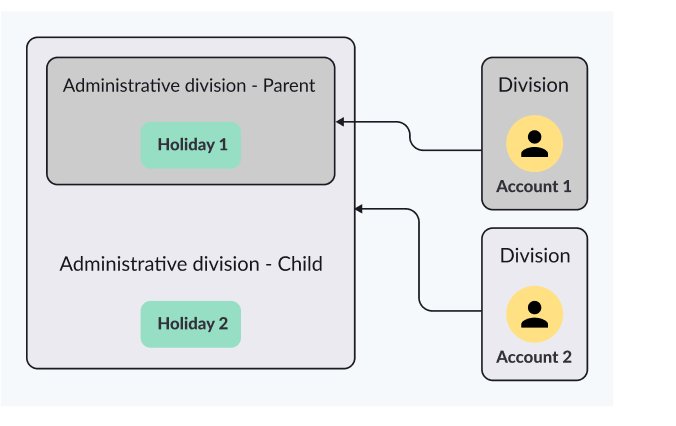Calendars and holidays in transaction banking
The Pismo platform, by default, supports uninterrupted transactions. However, banks often need to limit transactions on certain days, such as holidays, weekends, non-working days, and so on. The Pismo platform defines a holiday as any day the bank or financial institution does not allow transactions. Errors setting up holidays can prevent customers or businesses from accessing funds or executing payments, so careful planning of holidays and calendars are essential. Banks require a detailed calendar, marking out various types of days as holidays, to ensure proper transaction processing. To aid this process, the Pismo platform enables banks to define administrative divisions and assign division-specific holidays.
Here are some factors to keep in mind when setting up holidays and weekends on the Pismo platform.
| Factors to consider | Description and impact |
|---|---|
| Country's legal holidays | Days designated as holidays by the country's government. |
| Weekends | Weekends are defined differently in different countries. Different days might be included, and the number of days in a weekend can also vary. |
| Regional holidays | Certain holidays might be observed only in a specific state or region. |
| Customer considerations | A holiday might be defined for the convenience of customers. For example, consider a bank that is typically closed on Saturdays and Sundays. If a bank holiday occurs on a Friday, the bank can choose to close its branch on the following Monday. Additionally, the bank can configure to allow transactions to proceed without any interruptions over the weekend, ensuring access to funds for customers at all times. |
| Business considerations | When setting up holidays, various business considerations might come into play. For example, if a bank holiday coincides with a day when many businesses are closed, the bank might consider extending its operating hours the following day, allowing businesses to deposit their cash. |
| Transactions | For a bank or branch, there is a need to take into account transactions such as interest accruals and maturities. If such transactions coincide with a day when the bank or branch is closed, the bank staff should be allowed to configure their system to process them on a date before, after, or even on the closure date. |
Creating a calendar
For transaction banking, an administrative division functions as a calendar. The process of setting holidays on your calendar involves these steps.
- Creating administrative divisions.
- Setting up holidays within administrative divisions.
- Linking the administrative divisions.
Creating administrative divisions
Set up administrative divisions using the Create administrative division endpoint. This provides you with the flexibility to shape your calendar structure to match that of your administrative divisions. For example, if your divisions are organized as Region > Country > State > City > Branch, you can configure your calendar in a similar manner. This approach is beneficial as it accommodates regional, national, state, and even branch-specific holidays. However, it's crucial to create your division structure prior to creating calendars. This is necessary because of the administrative division's inherent hierarchy, in which holidays trickle down from parent to child calendars.
Setting up holidays within administrative divisions
Use Create holiday to establish holidays within an administrative division. If a holiday is not specifically configured using the transaction banking parameters, the Pismo platform defaults to the settings in the administrative division metadata when processing transactions. Note that the holiday metadata always takes precedence over the administrative division settings.
Linking administrative divisions
After establishing administrative divisions and holidays, you can connect them with their respective transaction banking divisions. This connection enables your divisions to "inherit" the holidays from the linked administrative division. To set up and manage these connections, use the Create division or Update division endpoints. In both endpoints, you must provide the administrative_division_id field with the correct administrative division ID.
Calendar inheritance
The following diagram provides a visual representation of how divisions inherit holidays from the administrative divisions they are linked to.

Figure 1: Calendar inheritance
In Figure 1, the parent division is linked to the parent administrative division. This means that Account 1 in this division observes Holiday 1. The child division, on the other hand, is linked to the child administrative division, so Account 2 in this division inherit Holidays 1 and 2 from both the parent and child administrative divisions.
A child division not linked to any administrative division does not inherit holidays from its parent.
Updated about 2 months ago